Thanks to the Woolgatherer Carding Mill, we are able to create the fine products that we do. We rely on this antique mill to produce the premium Eco Wool batting that fills every bedding product we make.
Woolgatherer’s Products
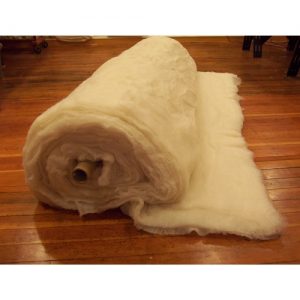 Woolgatherer Carding Mill produces several different wool products. The primary product is carded & garneted wool batting. Because Woolgatherer’s carding equipment was made to create very clean, fluffy batting, Woolgatherer has chosen to focus on higher-quality batting blends. They have also expanded to offering a variety of other natural textile products including organic cotton textiles, wool textiles and needle punched wools; most of which are manufactured at other American mills.
Woolgatherer Carding Mill produces several different wool products. The primary product is carded & garneted wool batting. Because Woolgatherer’s carding equipment was made to create very clean, fluffy batting, Woolgatherer has chosen to focus on higher-quality batting blends. They have also expanded to offering a variety of other natural textile products including organic cotton textiles, wool textiles and needle punched wools; most of which are manufactured at other American mills.
Woolgatherer’s signature batting blend is called Eco Wool. Eco Wool is entirely derived from regional/domestic flocks of sheep that are raised following our industry-leading sustainability and cruelty free standards. See the Eco Wool “Growing Criteria” tab for more information. All of our wool is purchased from the best farms in the country. We require that the wool has a minimal amount of vegetable matter and is not treated with any harsh chemicals.
The carding equipment then removes vegetable matter from the wool in 6 different steps, eventually producing this top of the line wool batting. Woolgatherer also produces grey wool batting and certified Organic wool batting.
Eco Wool Growing Criteria
Proper Grazing Methods
Our growers rotate sheep to different pastures to allow vegetation to recover from grazing. Our wool also comes from farms that do not 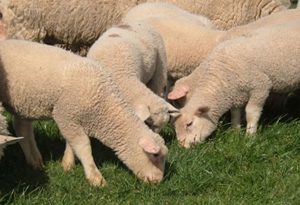 overstock their pastures. Overstocking and infrequent rotation produces soil erosion, more invasive plants and the need to bring in outside feed. Proper grazing techniques reduce soil erosion, create higher quality wool, and reduce the risk of sheep acquiring internal parasites.
overstock their pastures. Overstocking and infrequent rotation produces soil erosion, more invasive plants and the need to bring in outside feed. Proper grazing techniques reduce soil erosion, create higher quality wool, and reduce the risk of sheep acquiring internal parasites.
Predator Friendly
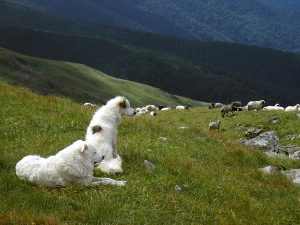
Only certain kinds of medications and supplements can be used to treat the sheep. We encourage alternative caring methods to keep sheep healthy with the use of fewer chemicals. Generally, sheep raised in open pastures are of better health and require less veterinary care.
Chemical Control
We oppose the use of herbicides and pesticides on fields where the sheep will be grazing. We are able to determine if wool has been in contact with harmful chemicals during routine testing.
Specifications for breed, color, strength and micron-width
Our wool blend uses wool from six to eight different breeds of sheep. Our blends are chosen to create strong, durable wool batting that retains its loft and resiliency longer. We use a mix of coarse and finer wools with varying crimps to achieve our special batting.
Common Wool Industry Practices that We Oppose
- Carbonizing: Wool fibers are dipped in strong acids to dissolve residual vegetable matter. We avoid all chemicals possible throughout the entire process.
- Chemical Crimping: After carbonizing, wool fibers are unnaturally straightened and require a chemical “perm” like treatment in order to regain their natural crimp, coiled structure. Our wool has a natural crimp to it that lasts longer and provides superior resilience.
- Dipping: At many farms, sheep are subject to a bath in a pesticide solution. We require a more holistic approach.
- Bleaching: In order to get the purest white and bright colored wool fibers, most wool is bleached and dyed. Our wool remains a natural white color that is completely free of bleaches and dyes.
- Harmful Shearing: Often when sheep are sheared the process is rushed which can result in broken limbs and deep cuts into the skin. We work with highly trained shearers who are able to shear quickly and gently so that there is no harm to the sheep.
- Mulesing: Cutting patches of skin of the sheep to discourage infection and inhibit flies from laying eggs in the folds is used primarily with Australian Merino sheep. None of our growers practice this method.
- Overgrazing: In addition to harming the land, overgrazing decreases overall wool quality. More invasive plants begin to grow and can increase the amount of vegetable matter in the wool. More vegetable matter often makes carbonizing necessary. Our sheep are rotated from field to field in order to ensure that there is no overgrazing of the land.
About Woolgatherer Carding Mill
Patrick Holland established the Woolgatherer Carding Mill in 1999 after a full life of exploring all types of different venues that had little to do with Wool. His love for animals led him to acquiring 5 sheep dogs. Soon after, Patrick decided that it was time for him to move to the country to become a shepherd where he could provide his dogs with a flock of sheep to herd and protect. He ended up in the Shasta Valley where he began the extensive and time consuming process of raising sheep.
When his flocks started to produce wool, Patrick was surprised by how difficult it was to find someone to purchase the wool at a reasonable price. He quickly realized that it would be near impossible to make a living selling his wool, so he began to think up ideas of what else he could do with his wool that could potentially turn a profit.
Around this same time, Patrick was introduced to Eliana Jantz and Shepherd’s Dream LLC. Shepherd’s dream was in its formative years and on the search for good quality carded wool batting. The combination of Eliana’s need for batting and Patrick’s interest in creating something with his wool led to Patrick’s determination to assemble a wool mill in the Shasta Valley. Inspired by the challenge, he found a recently closed wool carding mill in Oregon and purchased their equipment. He arranged for the disassembly, transport and re-assembly of 30,000 lbs of antique machinery. Patrick found an empty warehouse in Montague, Ca. where he set up this beautiful wool carding mill. This mill combs the wool 3 times as much as most carding machines creating cleaner and fluffier wool batting resulting in the perfect fill material for natural bedding products. Patrick worked hard to introduce his wool to bedding manufacturers other than Shepherd’s Dream LLC, but it was difficult to find new customers and the weight of owning a mill and a large flock of sheep was weighing on Patrick. In 2003, Patrick was unexpectedly diagnosed with cancer and passed on 6 months later on Father’s day. Patrick was an incredible man with great passion who brought joy and inspiration to many people’s lives.
New Woolgatherer Team
Soon after Patrick’s death, Nathon, a good friend of Patrick’s, began to assist with running the mill and soon was asked to purchase the mill from Patrick’s wife. Nathon had previously been working with Shepherd’s Dream LLC and with great respect for Patrick, was committed to doing whatever necessary to keep Patrick’s dream alive. Nathon began to educate himself on all aspects of running a wool mill and he slowly turned the Woolgatherer Carding Mill into a thriving company that is currently one of only a few wool mills running in the USA. Woolgatherer now consists of a team of about 11 full time employees who joyously supply Eco Wool® batting and other organic and natural fiber products to dozens of natural bedding companies throughout the USA. Woolgatherer Carding Mill continues to be a leader in pushing the US wool industry towards a more sustainable and creative future.
 Producing the Finest Wool Batting
Producing the Finest Wool Batting
Woolgatherer’s Mill is special in many ways. Rather than cranking out a “run of the mill” batting product, Woolgatherer takes its time and produces quality batting. There are many steps that must be taken in order to ensure top quality wool batting.
The Right Wool
The first step in creating exceptional Eco Wool batting is to purchase the right wool. Wool must have a minimum amount of vegetable matter. All wool must also fit a series of other standards for thickness, crimp and cleanliness.
 Scouring the Wool
Scouring the Wool
Wool must be scoured before use as the lanolin is greasy and will eventually begin to degrade the wool. Woolgatherer has tailored the washing process to fit extremely high standards. Instead of harsh detergents, a completely biodegradable product is used to clean the wool. The scour train is slowed to allow more thorough cleaning and rinsing. After meeting with the workers at the scouring plant several times, the Woolgatherer team is confident that these requirements are met.
Preparing for Carding
Once the clean wool batting is returned to the Woolgatherer facility, the wool is first fed into a picking machine. The primary function of the picking machine is to pull apart dense bales of wool to add air to the wool and to protect the carding mill from getting jammed. The picker also begins loosening vegetable matter. Remember that most other companies have washed their wool in acid to remove these persistent stickers and burs. Woolgatherer Mill works very hard in order to avoid that process AND to still create clean batting without prickly vegetable matter.
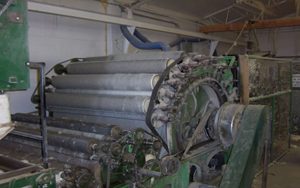 Carding the Wool
Carding the WoolAgain, the Woolgatherer facility is unique in how it cards wool. Most mills run the wool through a simple one breaker “garneting” machine. Woolgatherer uses a three breaker carding machine to comb the wool through 3 complicated breaker/carders that remove even more vegetable matter. The extra combing also creates fluffier, more consistent batting. In addition, midway through the combing process, the wool is crushed; this doesn’t affect the wool, but does crush what vegetable matter is still present in the wool.
Contact Woolgatherer Carding Mill
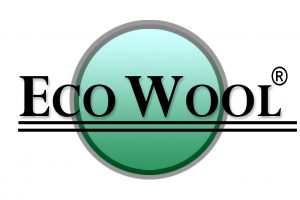
Phone: 530-459-5900 Fax: 530-459-5905
email: [email protected]

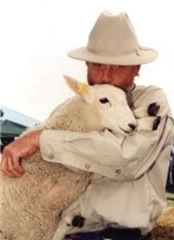
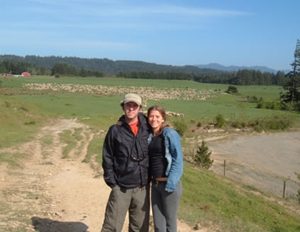
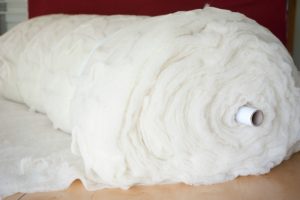 Producing the Finest Wool Batting
Producing the Finest Wool Batting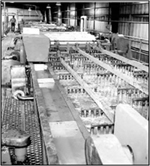 Scouring the Wool
Scouring the Wool